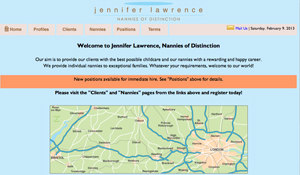The 'front-end' of the website is the bit the user sees or user interface (UI). This is the design bit: layout, fonts, colours etc and are looked after by the HTML code, the cascading style sheets (CSS) and enhanced using Javascript. The HTML code should be very simple and meerly contain content and 'tags' that link to the style sheet. The style sheet specifies what each 'tag' is: <H1> might be 16 point text, bold, red, using Gill Sans font in the CSS. All we need in the HTML code is <H1>
A well structured CSS file is key to clean construction of the web front end and a template is a good place to start. Change a single entry in the CSS and all the pages in the site that have a relevant CSS <LINK> entry in the <HEAD> of the HTML code will be altered. Therefore CSS is a very powerful tool in front end production and design. Combine this with individual images cut from a layered Photoshop file that are then linked into the site via tags in the HTML code and you have yourself the front of the website the user will see.


